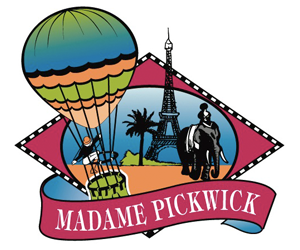Home » October, 2010
You are currently browsing entries posted in: October, 2010
The most devoted lovers of Florentine art complain that as a stylist Mantegna lacks the breath and freedom and, as an expressive artist, the human warmth that the Tuscans offer. They cannot see that Mantegna’s rejection of movement and fluidity on one hand, and of softened, sweetened, and gentled forms on the other, was a [...]
Naturally, in the life of a great writer no significant love remains untold. In 1977, during a period when his work took a turn toward comedy, Vargas Llosa wrote Aunt Julia and the Scriptwriter, about a young man named Mario and his bride.It’s almost a Latin American equivalent of Salinger’s “The Catcher in the Rye.” [...]
The gruesome, the tragic and the triumphant that could be depicted with paradoxical decorative elegance. His manner was prickly, his life was mundane and methodical, his painting was poised and static; why then should he have so much power to move us? But that is the miracle of art…. Mantegna: the first associations are hardness, [...]
The desires of Jane Austen were large and complicated. At the social level, she wanted liberty to state views, no matter whom she offended as well as exposing the orthodoxies of her time.She chose her enemies with care and analyzed their ideas with a biting but humane precision.On the personal level, she exposed the extent [...]
…and iron butterflies in the soul. Which “Belle du Jour” to rattle the ghosts in the cage of moral sentiments. Maybe men should get off the couch and take the trouble to find out instead of making virtue out of a closed mind; and a virtue of an unadventurous disposition…Can we ever dissolve the whore-madonna [...]
“Austen’s comedy participates in the Western tradition of komos –that is, comedy as a revelry in mischief. Liberated from what Charles Lamb calls “the burden of a perpetual moral questioning,” Austen’s mischievous humor specializes in truths uncongenial to the sentimentally-based morality of the novel of courtship and marriage, but fundamental for the moral clarity and [...]
Some critics describe Jane Austen’s works as novels of social comedy. When she wrote Pride and Prejudice she was just twenty-one years old. Her literary life was comprised between 1786 and 1817. A characteristic for the eighteenth century was the quick change of literary taste. Morals were always corrupt and the common life was still [...]
“… There was a kind of cold-hearted selfishness on both sides, which mutually attracted them… they were neither of them quite enough in love to think that three hundred and fifty pounds a year would supply them with the comforts of life.” ( from Sense and Sensibility ) Jane Austen employs a very psychological approach, [...]
…Howard Jacobson grew up in working-class Manchester, to a father who worked as a children’s entertainer and who ran a market stall selling trinkets. Bright, bookish and intellectually ambitious, he studied English literature at Cambridge under the legendary F.R. Leavis. “I’m an old-fashioned English lit. man,” he said. “Straight down the line — it’s George Eliot, [...]
“À propos to novels, I have discovered that our great favourite, Miss Austen, is my countrywoman; that mamma knew all her family very intimately; and that she herself is an old maid (I beg her pardon – I mean a young lady) with whom mamma before her marriage was acquainted. Mamma says that she was [...]
